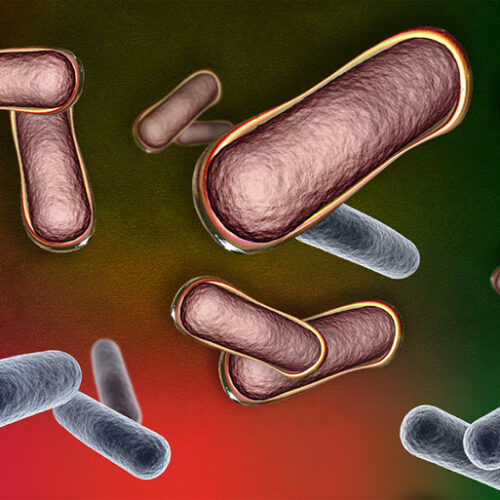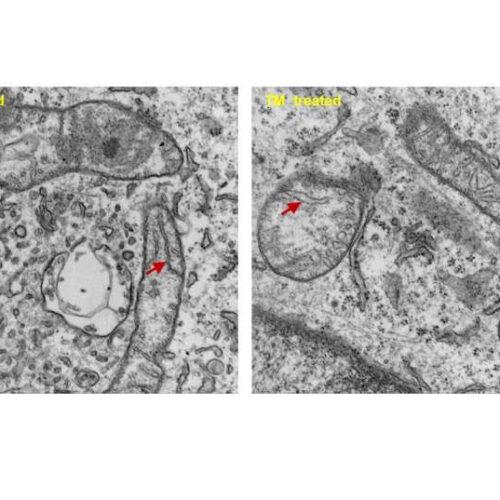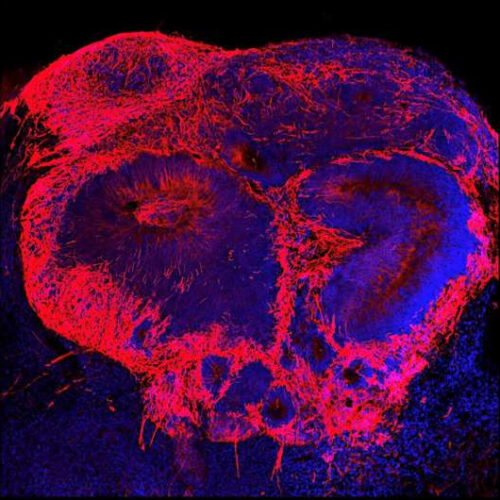Mitchel L. Zoler, Ph.D., for Medscape November 18, 2021 Key Takeaways Patients with type 2 diabetes who received daily treatment with sodium phenylbutyrate for 2 weeks had significant improvements in peripheral insulin sensitivity and glucose oxidation. The treatment appeared safe, with no reported adverse events. Why This Matters The results show, for the first time in humans, that treatment with an...
NIH researchers identify potential AMD drugs with stem-cell based research tool
Using a stem-cell-derived model, researchers have identified two drug candidates that may slow dry age-related macular degeneration (AMD), a leading cause of blindness for which no treatment exists. The scientists, from the National Eye Institute (NEI), part of the National Institutes of Health, published their findings in Nature Communications. “This stem-cell-derived model of dry AMD...
New discovery on how omega-3 fatty acids can reduce atherosclerosis
A receptor activated by substances formed from omega-3 fatty acids plays a vital role in preventing inflammation in blood vessels and reducing atherosclerosis, a new study from Karolinska Institutet published in The Journal of Clinical Investigation reports. The discovery can pave the way for new strategies for treating and preventing cardiovascular disease using omega-3 fatty...
Self-Assembling Coating Protects Bacteria for Therapeutic Delivery
DECEMBER 16TH, 2021 CONN HASTINGS GI, MATERIALS, MEDICINE Scientists are beginning to appreciate the importance of the gut microbiome in health and disease, and administering microbes that can enhance our health or prevent disease is the next logical step. However, bacteria are delicate and require protection. Researchers at MIT have now engineered a method to coat...
‘Playing Pool’ Is New Approach to Dislodge Kidney Stone Fragments
Maureen Salamon December 16, 2021 Ultrasound technology that moves small, lingering kidney stones toward the ureter to avert episodes of pain or additional surgery may be ready for US Food and Drug Administration (FDA) approval next year, researchers report. A 60-patient randomized clinical trial in progress at the University of Washington has produced encouraging findings from using focused...
Mistake: Doc Does Vasectomy Instead of Circumcision, Patient Sues; More
Wayne J. Guglielmo, MA December 15, 2021 The Iowa Court of Appeals has ordered a new trial in a case involving a man who received the wrong urologic surgery, according to a story reported in the Des Moines Register, among other news sites. In 2015, an immigrant from Myanmar named Zaw Zaw was referred by his primary care physician...
Nanotransfection Device for Tissue Reprogramming In Situ
DECEMBER 16TH, 2021 CONN HASTINGS DERMATOLOGY, GENETICS, MATERIALS, MEDICINE, NANOMEDICINE Genetic modification offers huge potential in treating a wide variety of conditions, but the devil is in the details. Previously explored methods to deliver genes into cells, such as using viral vectors, have been connected with safety issues. As such, the potential of gene therapy has not yet been...
Reducing copper in the body alters cancer metabolism to reduce risk of aggressive breast cancer
by Weill Cornell Medical College Transmission electron microscopy images showing TM-mediated changes in the cristae (arrow) inside the mitochondria of cancer cells, which contribute to cellular metabolism. Image courtesy of Dr. Divya Ramchandani, Juan Pablo Jimenez, and Leona Cohen-Gould. Depleting copper levels may reduce the production of energy that cancer cells need to travel and...
The choline transporter in the brain is necessary for tuning out unneeded information
by Public Library of Science Drosophila larvae whiff and adapt to survive in a dynamically changing world. Credit: Mrunal Nagaraj Kulkarni (CC-BY 4.0, creativecommons.org/licenses/by/4.0/) In habituation, an organism gets so used to a ubiquitous sight, smell, sensation or sound that it virtually disappears. Runa Hamid of the CSIR-Centre for Cellular and Molecular Biology in Hyderabad, India,...
‘Mini-brains’ provide clues about early life origins of schizophrenia
by Weill Cornell Medical College Increasing levels of a potential disease factor results in additional brain cells (red) in a schizophrenia brain organoid. Credit: Dr. Michael Notaras. Multiple changes in brain cells during the first month of embryonic development may contribute to schizophrenia later in life, according to a new study by Weill Cornell Medicine...






